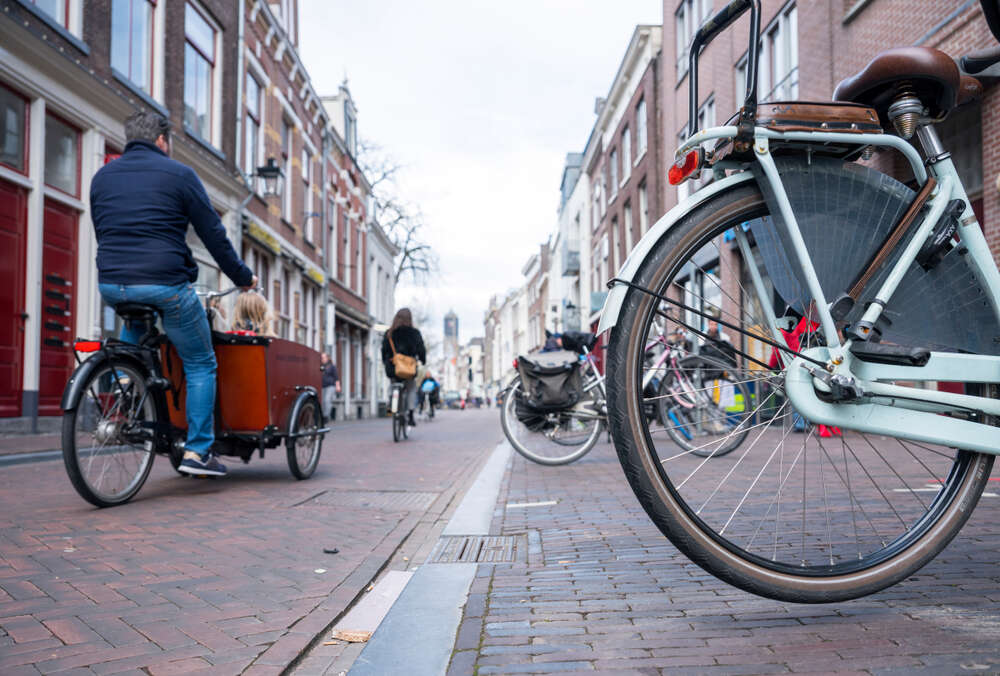
It is hard to ignore the role that cyclists have to play in decarbonising transportation in cities – bikes are a significantly more eco-friendly option than cars, with experts reporting that 46.2 million metric tons of CO2 were offset in 2018 by people commuting by bike.

But cycling in a busy city environment can also come with its perils. Heavy traffic, especially at rush hour, and a lack of secure bike facilities can mean that many people are put off this sustainable option.
Here, we look at the top cities that have got it right when it comes to cycling, and see what we can learn from them.
Utrecht, Netherlands
The top city in the Global Bicycle Cities Index for 2022, Utrecht scored highly across the board, and came top of the ‘small cities’ category. This isn’t just a case of adding a few bike racks – the city truly has cycling embedded as part of the infrastructure, with miles of bike paths, and secure, underground parking for thousands of bikes. In fact, the main railway station has enough underground parking for 12,500 bikes alone, which goes to show the scale of the operation.
It’s no wonder that cycling is popular among the locals, but tourists can benefit too. The city offers a bike rental service, accessed through an app, which means everyone can enjoy seeing the city on two wheels.
Münster, Germany
The self-appointed ‘German cycling capital’, Münster’s claim to fame is that, statistically, each person owns two bicycles – so it’s no wonder that this cycling-mad city has adapted to cope with the demand. As well as separate cycle paths on the main roads, Münster has a range of quieter cycle paths away from the hustle and bustle of the traffic.
In fact, if you head out of the main city, you enter the Münsterland cycling region. This picturesque landscape, with castles dotted along the trails, is the perfect place to spend the weekend. It is well equipped with specialist B&Bs for those who arrive with bikes, as well as repair points, so city dwellers can enjoy a retreat without even having to go that far from home.
Copenhagen, Denmark
It’s hard to think of the Danish capital without thinking of bikes. Scandinavia is no stranger to sustainability, and so it’s natural that this translates into their cities’ design as well. Copenhagen places cyclists at the heart of the city, with specific bike traffic lights to let cyclists go ahead of cars, car-free days across the year, as well as wide cycle lanes that are clearly marked. Additionally, cyclists have priority over cars, and this is instilled in Danish driving lessons.
In fact, the lanes are so wide that many people choose cargo bikes, known locally as Christiania bikes. These two-wheeled vehicles have a front carrier, big enough to hold your shopping, or indeed a couple of young children. As a result, it is not unusual to see parents cycling with a couple of toddlers in the front seats – a sight that would surely be cause for concern in central London.
Making cycling as safe as possible means that commuting parents can easily drop their kids off on the way to the office, rather than avoiding cycling completely because it is too difficult to manage the family logistics.
Amsterdam, Netherlands
At only 0.22 points behind Copenhagen on the Global Bicycle Cities Index, and the second Dutch city on the list, Amsterdam is also a haven for cycling commuters. Like much of the Netherlands, Amsterdam is relatively flat, meaning that getting to work doesn’t require you to break a sweat, especially if you use an e-bike. In order to encourage people to hop on their bikes, it is actually quite awkward to drive in the city, and there is very little free parking. On top of that, there are some streets that are closed to cars, or are one way only – surely enough to make most people consider leaving the car at home unless absolutely necessary.
[Read more: The way we travel around cities has changed: Now is the time for bike-sharing schemes to flourish]






